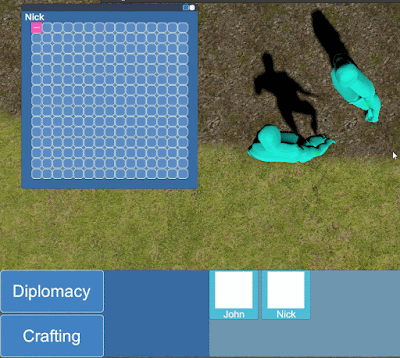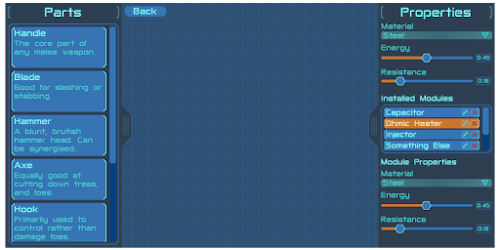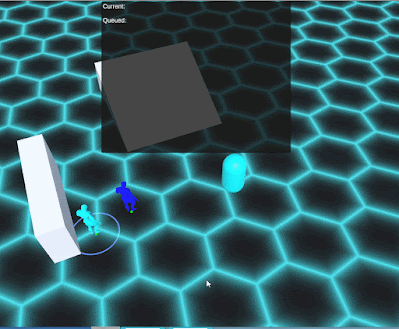February 2020 W2: Tending
I apologise for this blog post going up so late, I wasn't at a point where I felt I was happy making a post on the Friday and told myself 'I'll do it Monday afternoon, that way I have an extra day of work to polish!'. Alas, that never panned out, and here we are on Wednesday afternoon.
As a matter of principle I won't be using any gifs from this week (W3) in this post, and I will be only talking about progress I made last week.
I ended up using two libraries to expand the async functionality, as well as to better hook in to Unity's inbuilt functionalities: UnityAsync, and AsyncEx. Both have been excellent, and extremely easy to work with.
As a matter of principle I won't be using any gifs from this week (W3) in this post, and I will be only talking about progress I made last week.
Medical Care
The primary feature of the last week, amongst small refactors and minor improvements, was the ability to tend to wounds. As there is no visual indication of the 'Tended' status, I've swapped the functionality to directly heal injuries for the purposes of the below gif.
 |
| Excuse the pushing, he's a little overeager |
The tending system also brought along with it an item context menu, similar to the current character action context menu, and a generic progress bar.
Async Refactor
Week 2 brought about the question of how to handle AI behaviours programmatically. The existing solution was Unity co-routines, which work fine but lack the level of finesse that I wanted in my code base. Getting async/await to play well with Unity Monobehaviours was a little trickier than using co-routines themselves but was honestly well worth it once finished; the code is cleaner, and more modular.I ended up using two libraries to expand the async functionality, as well as to better hook in to Unity's inbuilt functionalities: UnityAsync, and AsyncEx. Both have been excellent, and extremely easy to work with.
Tending Behaviour
The normal behaviour of healing wounds (Through using a medical item) is to tend the wound, not necessarily to completely heal it. The effects of tending a wound are based on two things: the wound's maximum tending reductions, and the quality of the tend.
Max Tend Values
Each wound has defined "Max Tend Functionality" and "Max Tend Heal Multiplier" values. The former of the two is the percentage of functionality you can return with a tend of 100% quality. Consider a wound with the following values:
Modifiers: Flight, 0.5, Manipulation, 0.2
Max Tend Functionality: 0.9
Max Tend Heal Multiplier: 5.0
While untended, the wound takes 50% of the flight functionality, and 80% of the manipulation away from the affected body part. When tended, the functionality is restored as follows, where F is functionality, M is the base modifier, and Q is the tend quality.
F = 1 - (1 - M) * (1 - Q) therefore, for the above example...
F_m = 1 - (1 - 0.2) * (1 - 0.9)
F_m = 1 - 0.8 * 0.1
F_m = 1 - 0.08
F_m = 0.92
F_f = 0.95
Essentially,m the MaxTendFunctionality determines how much the injury's effects are mitigated. MaxTendHealMultiplier is pretty much what it says on the tin; it's a straight multiplier to heal speed. In this case, the heal speed goes from 1.0/s to 5.0/s.
Modding In Astraeus
Over the last week, I've taken some time to think about the future of modding in Astraeus. I've come to the conclusion that it will not be included as a prototype feature, and therefore unlikely to make it into the base game barring high success in the funding round. If the game ends up on Kickstarter, it'll likely be a stretch goal.
I am personally incredibly interesting in making it happen, but as it stands it would require a rethink and refactor of how the game is programmed, and how data is stored. With my current financial situation and the necessity for speed in development, this is just not within scope for the moment.


Comments
Post a Comment